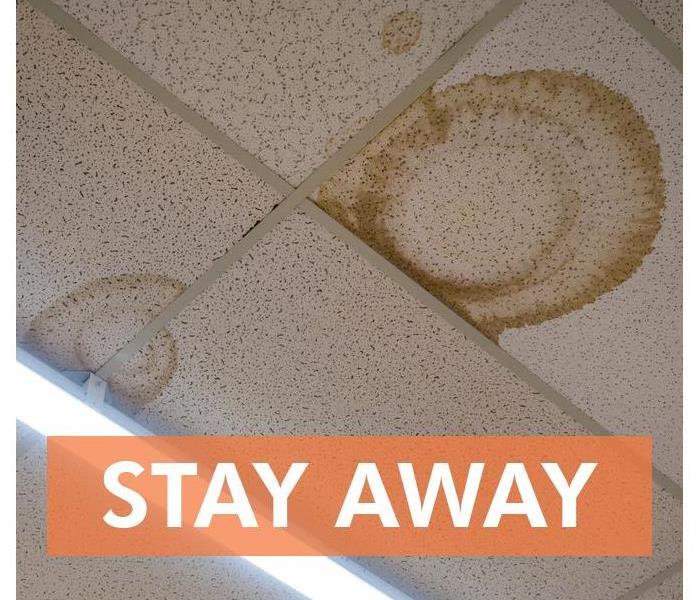Beware of Mold After Flooding
10/28/2019 (Permalink)
 Porous materials, such as commercial ceiling tiles and carpet, may have to be thrown away if they become moldy.
Porous materials, such as commercial ceiling tiles and carpet, may have to be thrown away if they become moldy.
When flooding happens in Bristol, PA, the water itself isn’t the only thing that can cause damage to your business. After the standing water subsides, it’s common for bacteria to be left behind and the right conditions to form for mold growth. Calling in an expert for quick mitigation and cleanup is imperative to further damage from happening.
Mold Grows Fast
If the conditions are right, the spores already floating in the air will take root and begin to start growing within 48 hours. After a flood, these microorganisms have everything they need to flourish: moisture, warm temperatures and food. Their sustenance is bountiful in your business. Mold thrives on various materials including:
- Natural fibers like cotton or wool
- Paper
- Wood
- Leather
- Surfaces with organic material such as grease, food or dirt
- Organic porous materials, including carpet, drywall, padding, furniture and fabrics
After the Flood
Preventing mold growth is always the best route to take. When the unexpected happens, taking quick action can reduce the chances of an extensive breakout. After the flood, the following can help reduce mold damage.
If the humidity levels are lower outside, open windows and doors to air out the building.
Remove any wet items. This includes furniture, papers and other belongings.
Clean up any standing water using a wet vacuum, which includes saturated carpets.
Use fans and dehumidifiers to help dry things out, as well as eliminate evaporation.
Use a disinfectant to clean any exposed surfaces.
Additionally, porous materials with extensive saturation will need to be discarded. This may include sections of drywall, carpeting and ceiling tiles. Even if it doesn’t seem like the flood waters reached very high, water quickly wicks up and could be hiding the perfect environment for mold.
A flood itself requires significant attention. When it's finally over, the last thing you want is lingering mold growth as a reminder. When it comes to mold cleanup, count on professional to eradicate the problem and make it Like it never even happened.






 24/7 Emergency Service
24/7 Emergency Service